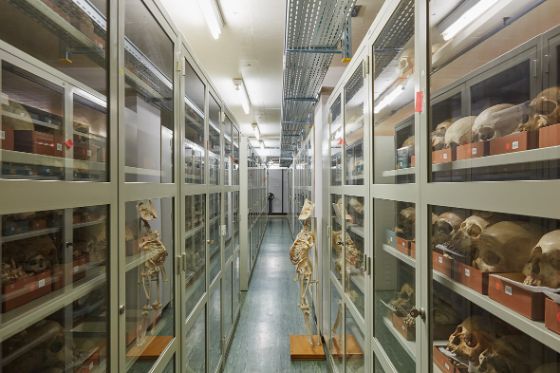Mites Acari
The mite collection comprises more than a thousand type specimens, 10,000 microscope slide preparations, and thousands of individuals preserved in fluid. The water mite collections of Charles Walter and Carl Bader rank among the most important scientific reference collections worldwide for this animal group. Additional collections originate from Büttiker, Chappuis, Schweizer, Schwoerbel, Sepasgozarian, and Daday.
Within the arthropods, mites belong to the arachnids. They inhabit aquatic and terrestrial environments, or live as parasites in and on animals, plants, and humans. Mites are extremely species-rich and among the most ecologically successful groups of animals.
They attract broad scientific interest. Central research questions in biogeography, ecology, evolution, and parasitology can be addressed using them. Beyond their importance for basic research, they also play a major role as bioindicators in applied aquatic and soil assessment.
For more than half a century, Charles Walter and Carl Bader, as curators at the Natural History Museum Basel, studied water mites. Through their long-standing contacts, many significant collection specimens were acquired: material from the Swiss National Park, from Swiss water bodies (Walter Collection), as well as extensive material from Iran and Africa.
The much smaller collection of terrestrial mites is represented mainly by the Schweizer collection. With the exception of feather mites from Switzerland and Saudi Arabia, collected by William Büttiker, there are currently hardly any parasitic mites present.
